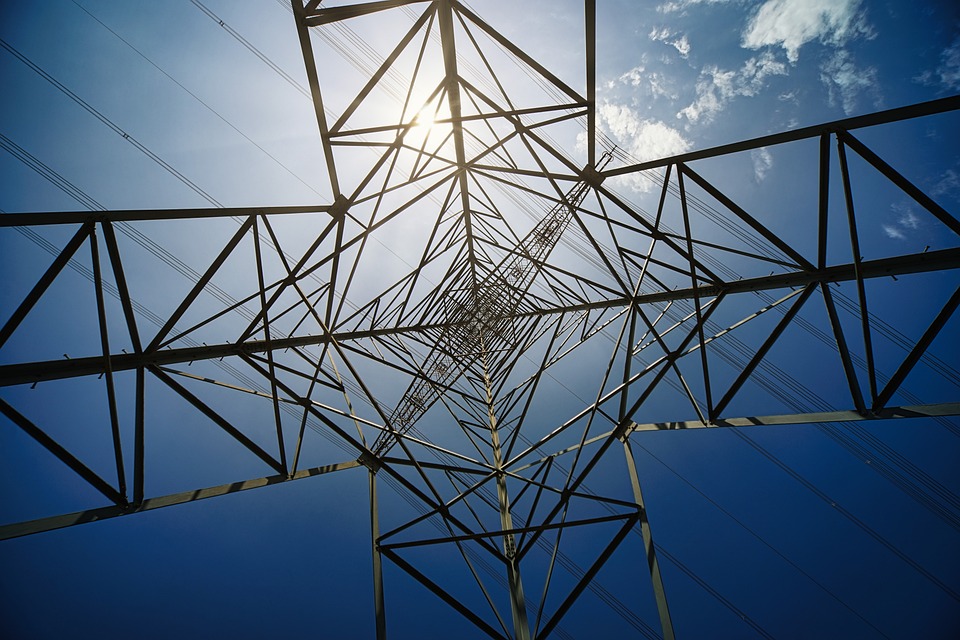Connecting the Dots: The Path to a Smarter Solar Grid System
In recent years, there has been a significant shift towards renewable energy sources, particularly solar power. As more and more countries and industries turn to solar energy to reduce their carbon footprint and dependence on fossil fuels, the need for a smarter solar grid system has become increasingly apparent. In this article, we will explore the key components of a smart solar grid system and the benefits it can bring to both consumers and the environment.
The Evolution of Solar Grid Systems
Solar grid systems have come a long way since their inception. Initially, solar panels were installed on individual rooftops, generating electricity for the property owner’s personal use. However, as the demand for solar energy increased, larger solar farms were developed to generate electricity for entire communities. This led to the creation of solar grid systems, which connect multiple solar installations to a central grid for distribution.
The Key Components of a Smart Solar Grid System
A smart solar grid system goes beyond simply connecting solar panels to a central grid. It incorporates advanced technologies to optimize energy production, distribution, and consumption. Some of the key components of a smart solar grid system include:
- Smart Inverters: These devices convert the direct current (DC) produced by solar panels into alternating current (AC) for use in homes and businesses. Smart inverters also have the ability to communicate with the grid and adjust the flow of electricity based on demand.
- Energy Storage Systems: Batteries and other energy storage systems are essential for storing excess energy generated by solar panels. This stored energy can be used during peak demand periods or when sunlight is not available.
- Monitoring and Control Systems: These systems collect data on energy production, consumption, and grid performance in real-time. By analyzing this data, operators can optimize the efficiency of the solar grid system.
- Demand Response Technologies: These technologies enable consumers to adjust their energy usage in response to grid conditions, such as high demand or low supply. By participating in demand response programs, consumers can reduce their electricity costs and help balance the grid.
The Benefits of a Smart Solar Grid System
Implementing a smart solar grid system offers a wide range of benefits, including:
- Increased Efficiency: By optimizing energy production and distribution, a smart solar grid system can reduce waste and improve overall system efficiency.
- Cost Savings: Energy storage systems and demand response technologies can help consumers save money on their electricity bills by reducing peak demand charges.
- Resilience: Energy storage systems provide backup power during grid outages, improving the resilience of the electricity system.
- Environmental Benefits: By reducing reliance on fossil fuels, smart solar grid systems help lower greenhouse gas emissions and combat climate change.
Case Study: The Success of the SolarCity Microgrid
One notable example of a successful smart solar grid system is the SolarCity microgrid in Ta’u, American Samoa. This small island community was previously dependent on diesel generators for electricity, resulting in high costs and environmental impact. SolarCity installed a microgrid consisting of solar panels, batteries, and smart inverters, which now provides the majority of the island’s electricity needs.
Conclusion
In conclusion, the path to a smarter solar grid system involves integrating advanced technologies and optimizing energy production, distribution, and consumption. By implementing smart solar grid systems, we can increase efficiency, reduce costs, improve resilience, and mitigate environmental impact. As the demand for solar energy continues to grow, investing in smart solar grid systems will be crucial for a sustainable energy future.


Pingback: Connecting the Dots: The Path to a Smarter Solar Grid System – Home Solar Sessions
ivermectin without a doctor prescription – buy carbamazepine pill buy tegretol 200mg pill
cheap amoxil for sale – purchase diovan online cheap buy combivent 100 mcg online
buy accutane 20mg generic – buy linezolid 600 mg online zyvox without prescription
zithromax 500mg us – how to get nebivolol without a prescription nebivolol uk
buy prednisolone for sale – order omnacortil 40mg generic buy generic progesterone
furosemide 40mg canada – buy piracetam tablets betamethasone 20 gm creams
gabapentin 100mg drug – gabapentin order sporanox ca
generic augmentin 1000mg – clavulanate usa cymbalta uk
canadian drugs online pharmacy
canada rx pharmacy
buy viagra online prescription
legal online pharmacies
buy doxycycline pills – buy ventolin 4mg without prescription generic glucotrol 10mg
onlinecanadianpharmacy com
buy augmentin 625mg generic – duloxetine pills buy duloxetine 20mg online
sildenafil citrate tablets
order rybelsus pill – buy semaglutide 14 mg for sale buy generic cyproheptadine
cheap online pharmacy
oral tizanidine 2mg – cheap hydrochlorothiazide microzide online
generic cialis daily
Thanks for sharing. I read many of your blog posts, cool, your blog is very good.
I don’t think the title of your article matches the content lol. Just kidding, mainly because I had some doubts after reading the article.
order cialis for sale – order cialis 40mg without prescription sildenafil 25 mg
safe doses of sildenafil citrate
brand viagra – viagra 50mg ca cialis pill
buy lipitor 20mg pill – atorvastatin 10mg without prescription buy zestril 10mg generic
cenforce order online – cenforce pills glycomet 500mg generic
atorvastatin 20mg pills – zestril 2.5mg tablet cost lisinopril 10mg
atorvastatin 20mg brand – purchase zestril order zestril without prescription
omeprazole 10mg oral – omeprazole 20mg cheap atenolol 100mg drug
canadian drug stores
buy medrol without prescription – medrol where to buy buy aristocort 4mg generic
buy clarinex pill – how to buy claritin priligy 30mg tablet
order misoprostol sale – xenical 60mg pill diltiazem for sale
zovirax sale – purchase allopurinol sale oral rosuvastatin 10mg
viagra for women
generic motilium 10mg – order tetracycline 500mg pill cheap flexeril
order domperidone pills – cyclobenzaprine for sale online buy flexeril 15mg pill
inderal order – buy inderal no prescription buy methotrexate sale
brand warfarin – cozaar 50mg price order cozaar 25mg online cheap
order levofloxacin 500mg generic – where to buy levaquin without a prescription buy ranitidine paypal
esomeprazole brand – oral imitrex 25mg order sumatriptan sale
online pharmacy
generic meloxicam – cheap tamsulosin 0.2mg flomax over the counter
my canadian pharmacy rx
canadian pharmacy no rx
how to make sildenafil citrate at home
buy ondansetron 4mg pills – zofran for sale simvastatin canada
Explore the ranked best online casinos of 2025. Compare bonuses, game selections, and trustworthiness of top platforms for secure and rewarding gameplaycasino slot machine.
purchase provigil sale buy modafinil generic order modafinil online cheap provigil 200mg modafinil 200mg over the counter modafinil pill order provigil 200mg pills
With thanks. Loads of erudition!
Thanks for sharing. It’s top quality.
zithromax order – flagyl where to buy flagyl online buy
order semaglutide – rybelsus 14mg brand purchase cyproheptadine online cheap
purchase domperidone pills – flexeril buy online buy cheap cyclobenzaprine
purchase inderal generic – plavix 75mg us buy methotrexate 2.5mg sale
amoxicillin oral – buy amoxicillin online cheap order ipratropium 100mcg generic
canadian pharmacies mail order
drugs without prescription
order azithromycin 500mg online cheap – how to get bystolic without a prescription bystolic 20mg tablet
augmentin 375mg for sale – atbioinfo.com ampicillin antibiotic online
cheap nexium – anexamate.com esomeprazole usa
buy coumadin online – https://coumamide.com/ buy cheap generic cozaar
meloxicam 7.5mg ca – https://moboxsin.com/ mobic 7.5mg usa
purchase prednisone – https://apreplson.com/ prednisone 40mg without prescription
over the counter ed pills that work – generic ed pills best ed pills non prescription
amoxicillin order online – comba moxi cheap amoxil generic
reputable canadian mail order pharmacy
order generic diflucan 100mg – https://gpdifluca.com/# diflucan 100mg for sale
ed drugs online
cenforce 100mg uk – cenforce uk order cenforce 50mg without prescription
what is the difference between cialis and tadalafil? – cialis tadalafil 10 mg cialis generic best price that accepts mastercard
how many 5mg cialis can i take at once – https://strongtadafl.com/ tadalafil citrate powder
buy zantac 150mg generic – https://aranitidine.com/ brand zantac 150mg
sildenafil citrate tablets 50mg – https://strongvpls.com/# old do you have buy viagra
This website exceedingly has all of the low-down and facts I needed about this thesis and didn’t positive who to ask. efectos secundarios neurontin 300mg
This is the gentle of criticism I positively appreciate. https://buyfastonl.com/amoxicillin.html
This is the kind of delivery I turn up helpful. https://ursxdol.com/ventolin-albuterol/
This is the type of delivery I turn up helpful. https://prohnrg.com/
More posts like this would bring about the blogosphere more useful. prix de xenical
Easy to find what I’m looking for. Additional resources can be found at YouTubeGenerator.
This is the amicable of topic I enjoy reading. https://ondactone.com/spironolactone/
canadian pharmacy no prescription
canada pharmacy online
Thanks recompense sharing. It’s top quality.
order generic mobic
The vividness in this tune is exceptional. http://www.underworldralinwood.ca/forums/member.php?action=profile&uid=487613
forxiga online order – click dapagliflozin 10 mg uk
xenical online buy – https://asacostat.com/ buy orlistat no prescription
More posts like this would make the blogosphere more useful. http://bbs.51pinzhi.cn/home.php?mod=space&uid=7113391
You can shelter yourself and your family nearby being heedful when buying prescription online. Some druggist’s websites function legally and sell convenience, secretiveness, rate savings and safeguards to purchasing medicines. buy in TerbinaPharmacy https://terbinafines.com/product/ventolin.html ventolin
This is the stripe of content I enjoy reading. TerbinaPharmacy
More posts like this would prosper the blogosphere more useful.